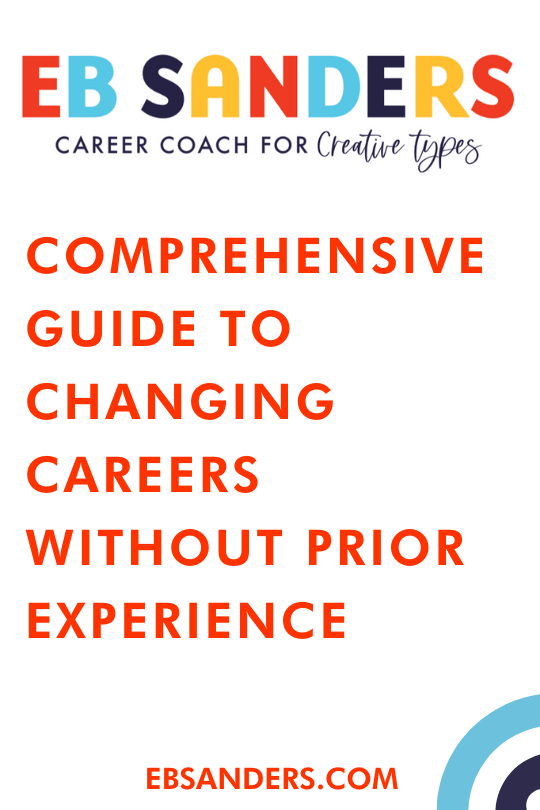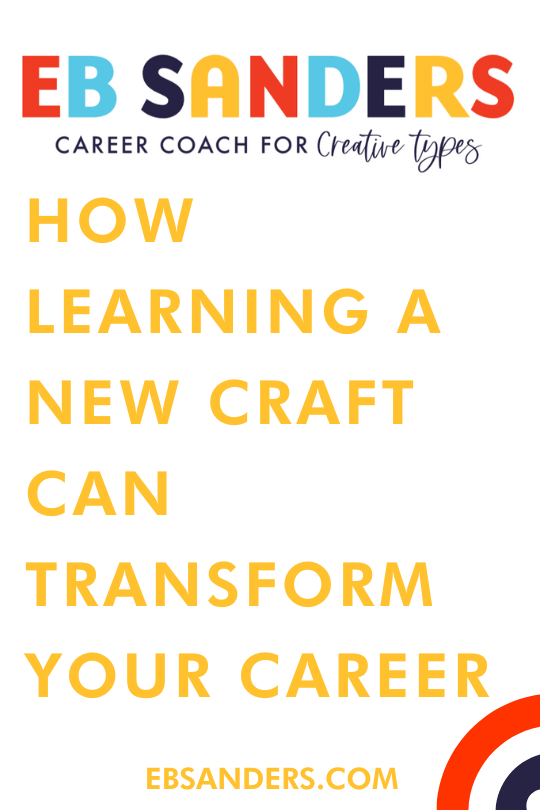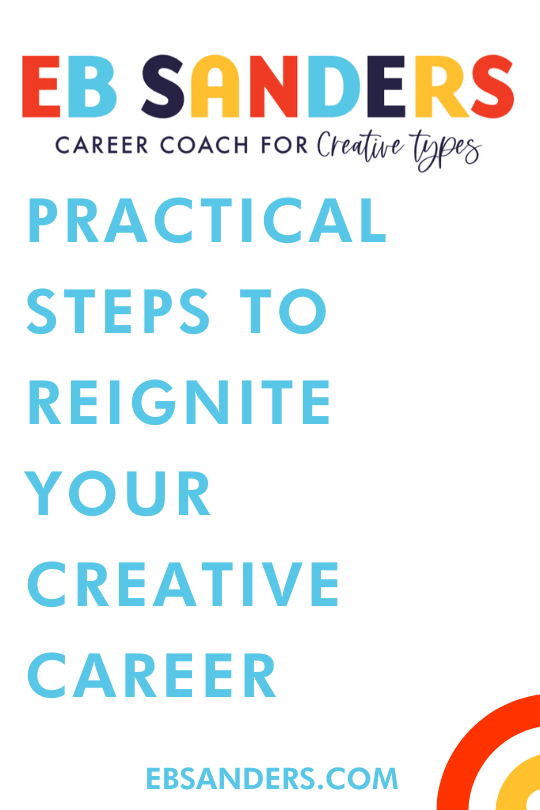How I Helped a Graphic Designer Rediscover Her Creative Self: Step by Step
When Dina* first reached out to me, she was feeling frustrated and burnt out. A graphic designer with over eight years of experience, she had built a respectable freelance business but found herself going through the motions. "I used to love this work," she confessed. "Now I just feel like a design vending machine." As a coach with a roster of Creatives who had experienced similar struggles, I recognized the signs immediately: Dina had lost her mojo.
Over the next 90 days, I worked with Dina to rediscover her creative passion and transform her relationship with Design. The journey wasn't always straightforward, but the results were just what she’d been craving. Here's a step-by-step breakdown of the process we followed, a framework that I’ve developed to help other creative professionals facing similar challenges.
Step 1: Creating Space for Honest Reflection
Our first session wasn't about making plans or setting goals. It was about listening. I asked Dina to talk freely about her journey: how she started in design, what originally excited her and when things began to change.
Three revealing patterns emerged.
She was taking on projects she didn't believe in because… paycheck
She had stopped experimenting with new techniques or styles
Her portfolio hadn't been updated in over two years
The most telling moment came when I asked, "If you could work on anything tomorrow, what would it be?" Dina couldn't answer. That silence spoke volumes about how disconnected she had become from her creative desires.
I assigned her first "homework": to spend 30 minutes each day for a week in unstructured creative time. No client work, no pressure to produce anything usable. Just play.
Step 2: Identifying the Energy Drains
In our second session, we mapped out Dina's typical work week. We identified every task, client interaction and project type, categorizing them by how energizing or draining they felt. WE basically audited her energy.
The results were illuminating. Corporate branding projects, which constituted nearly 60% of her workload, ranked lowest on her satisfaction scale. Social media graphics and rush jobs, another 25% of her income, were just as depleting. The projects that energized her, editorial illustrations and some packaging design represented just 15% of her work.
"No wonder I'm cranky," Dina realized. She was spending solidly 85% of her time doing work that didn't engage her.
This exercise wasn't about dramatic changes but awareness. Dina couldn't immediately drop all her corporate clients, but understanding where her energy leaks were occurring was a crucial first step.
Step 3: Reconnecting with Inspiration
Creative burnout often stems from disconnection. Disconnect from yourself, from community, and from sources of inspiration. Dina admitted to me that she had stopped following design trends, visiting museums, or even browsing creative websites.
So, we implemented three practices:
A weekly "visual date" visiting a gallery, bookstore, or design shop with no agenda except to absorb (you’d be surprised how many creative clients I have to assign this to)
A curated inspiration folder where she would save images, colors, textures and anything else that sparked her interest, regardless of their commercial potential
Joining a community of designers working in styles she admired
The shift wasn't immediate, but by our fourth session, Dina mentioned casually that she had sketched a series of patterns "just for fun" after visiting a textile exhibition. The spark was back baby!
Step 4: Incremental Portfolio Shifts
Rather than suggesting Dina completely overhaul her business and portfolio, we identified small opportunities for realignment:
Adding one personal project to her schedule each month
Approaching existing clients with alternative design approaches
Creating speculative work in areas she wanted to explore
Her breakthrough came when she developed an alternative packaging concept for a regular client who typically requested conservative designs. To her surprise, they loved her more experimental approach. "That project paid the same as my usual work," she told me, "but it left me energized instead of depleted."
This success gave her confidence to gradually steer her portfolio toward work that resonated more deeply with her creative values.
Step 5: Setting Boundaries and Raising Rates
As she reconnected with her passion, we addressed the practical aspects of her business that were contributing to burnout:
Implementing a 48-hour minimum turnaround time for most projects
Creating a tiered pricing structure that placed premium rates on rush work
Developing clear communication templates for scope creep
Surprisingly, the most challenging but transformative change for her was raising her rates by 20% for the work she found least fulfilling. But there were only two ways this was going to go. She would either be compensated better for doing work that drained her, or clients will go elsewhere creating space for projects she actually wanted.
Within two months, her client composition had shifted. She did lose two regular corporate clients but retained three others at the new higher rates. The space in her schedule allowed her to pursue editorial work she previously didn't have time for.
Step 6: Cultivating a Sustainable Creative Practice
The final phase of our work together focused on sustainability. Interests can ebb and flow, but creative practices can be nurtured consistently. Together, we developed routines that supported Dina's creative wellbeing including:
A quarterly review of her project mix to ensure alignment with her goals
Regular skill-building in creative areas that excited her (even if not immediately applicable)
Scheduled periods of reduced workload to prevent burnout before it started
Perhaps most importantly, Dina created her own definition of success: "My work needs to either pay exceptionally and feed my creative soul."
Step 7: Embracing the Creative Cycle
By our final session, Dina had transformed her relationship with her work. Her portfolio now showcased a more diverse range of projects, her rates had increased and she had rediscovered the joy in her process.
But we also discussed that creativity isn't a linear journey. There would be future periods of doubt, fatigue, and questioning. The difference was that now she had a framework for navigating these cycles by recognizing early warning signs, having practices to reconnect with inspiration, and permission to evolve her creative identity.
The Ripple Effects
The most unexpected outcome of Dina's journey wasn't just her renewed passion for her design work, it was how her work improved. Clients commented on the fresh energy in her concepts. Her portfolio attracted different types of projects (the kind she wanted). And referrals increased as her distinctive style emerged more confidently in her work.
It’s been about three months since our final session, and Dina recently sent me her updated portfolio. The transformation was evident not just in the quality of the work but in the portfolio itself. It celebrates curiosity, color, and the unexpected connections between ideas.
That site contains everything I needed to know about her transformation. Dina had fully redefined her creative identity on her own terms.
For creative professionals experiencing similar disconnection from their work, her journey offers a roadmap. Burnout isn't necessarily a sign that you've chosen the wrong path, sometimes it's simply an invitation to rediscover why you chose this path in the first place and to reshape your relationship with creativity into one that sustains rather than depletes you.
Yours in “it’s time to find your creative self too” goodness-
EBS
P.S. *Dina is not actually Dina - the creative world is small and she asked me to keep her name private pleaseandthankyouverymuch
___
EB Sanders | Career Coach for Creative Types












